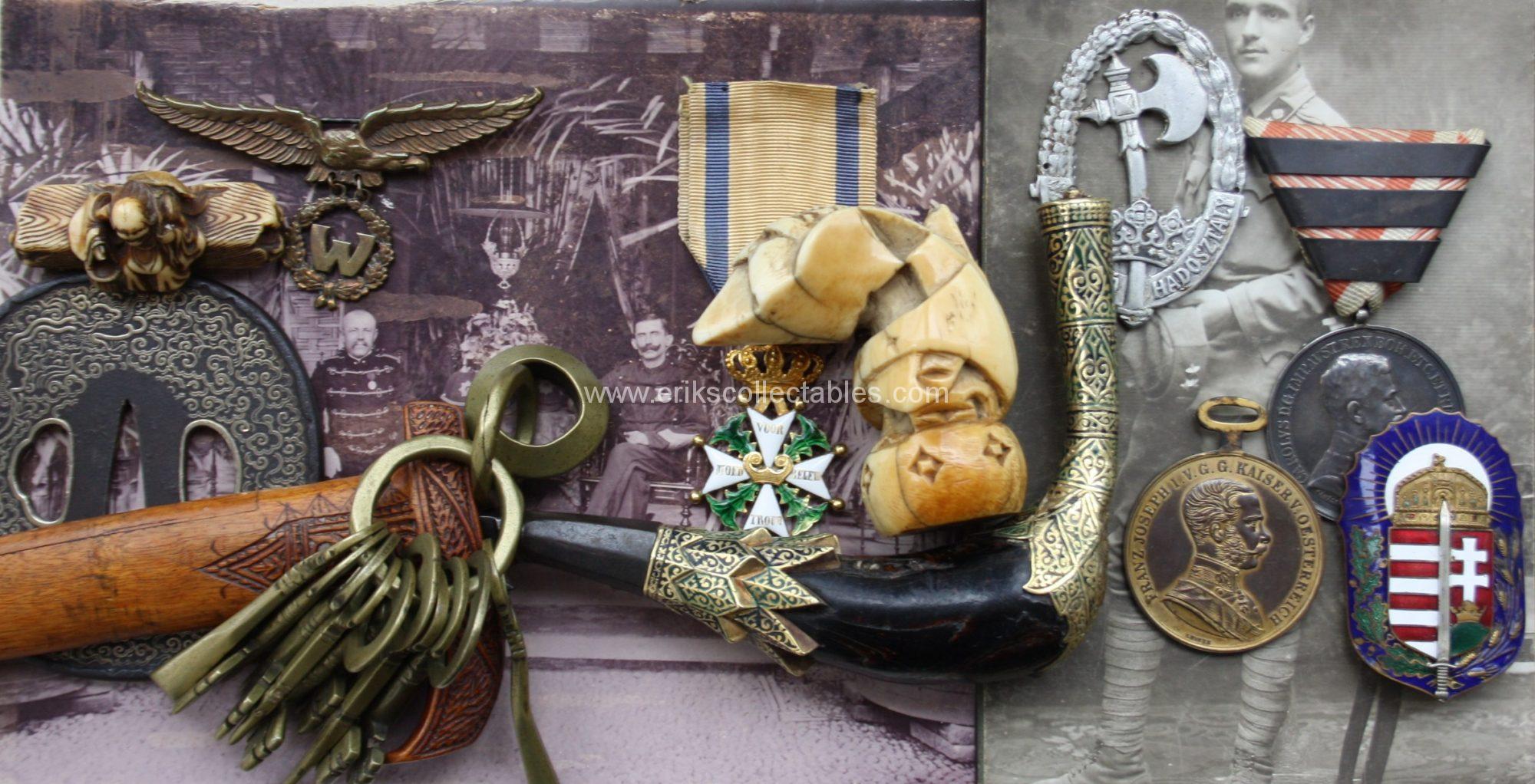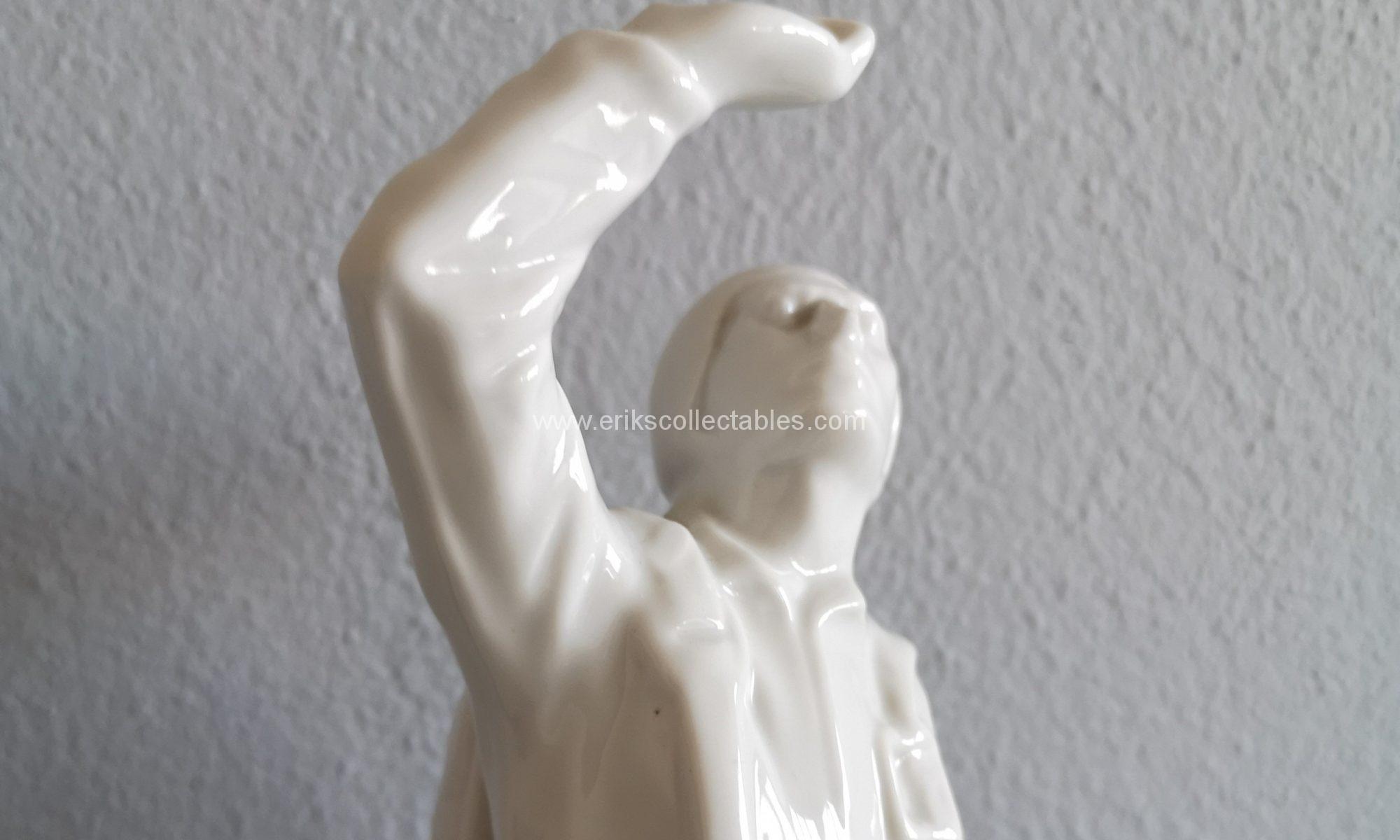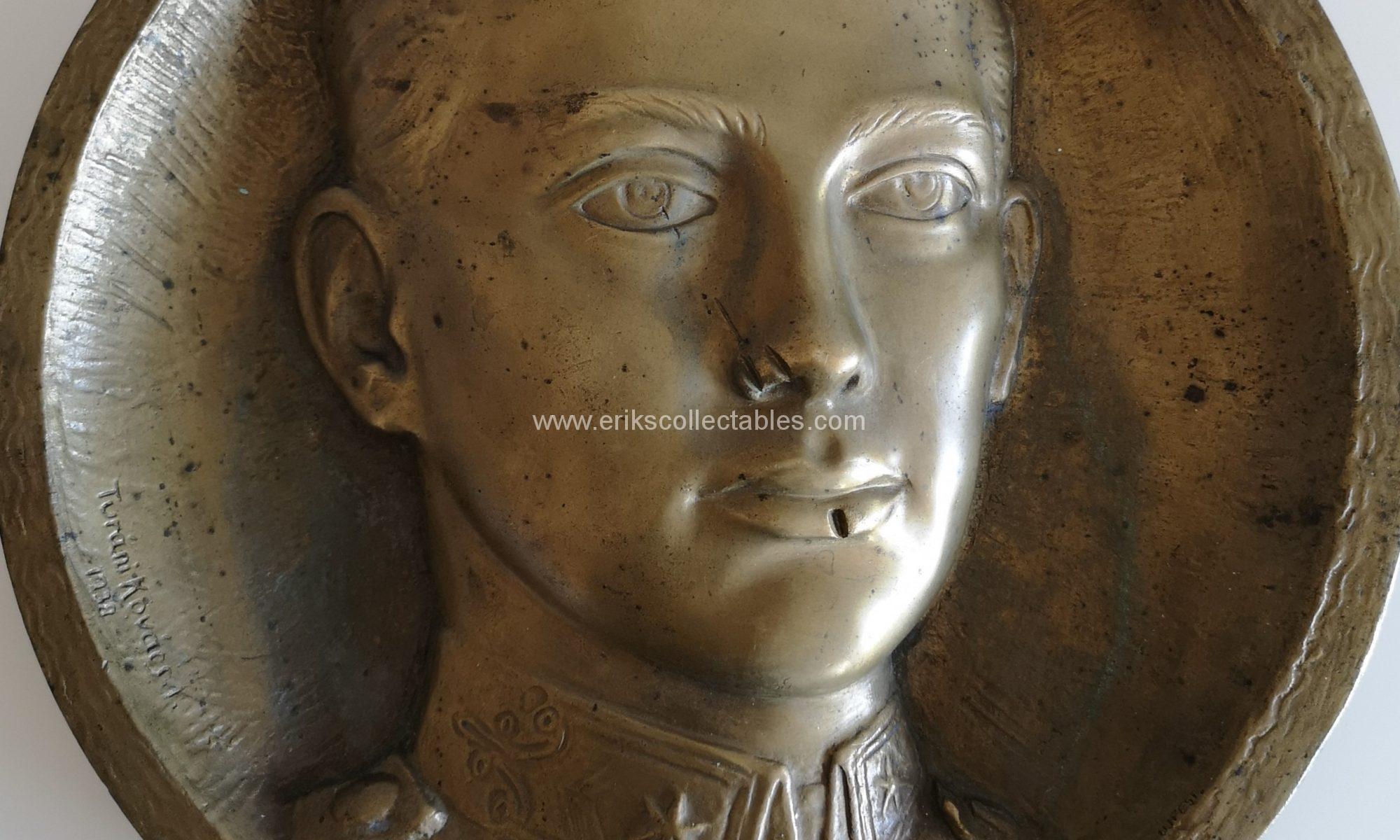One of my main collecting themes used to be this Vitéz order. At that time I even ran a quite extensive website with information on the order, variations etc. This is a short, condensed, version of that information.
Hungary was a defeated country after the Great War. The war was lost, neighboring countries invaded, a communist revolution took place and a for Hungary very unfortunate Trianon treaty was signed. Admiral Horthy became the Regent (a historic Hungarian title) of this troubled nation in 1920.
This was the moment for a new order to celebrate the heroes of a lost war and re-establish a feeling of national pride. The Order of the Valiant* (in Hungarian, Vitézi Rend) or Knighthood of the Heroes was the first and probably the most important Hungarian order established after the Great War and had a substantial social impact.
*(The word vitéz has several meanings in the dictionary. As noun: warrior, soldier, champion, hero, knight and as adjective: valiant, gallant, brave, fearless of danger. Therefore giving the name of the order an exact translation is difficult. The two translations used here I have seen used in several documents therefore I use them as well.)
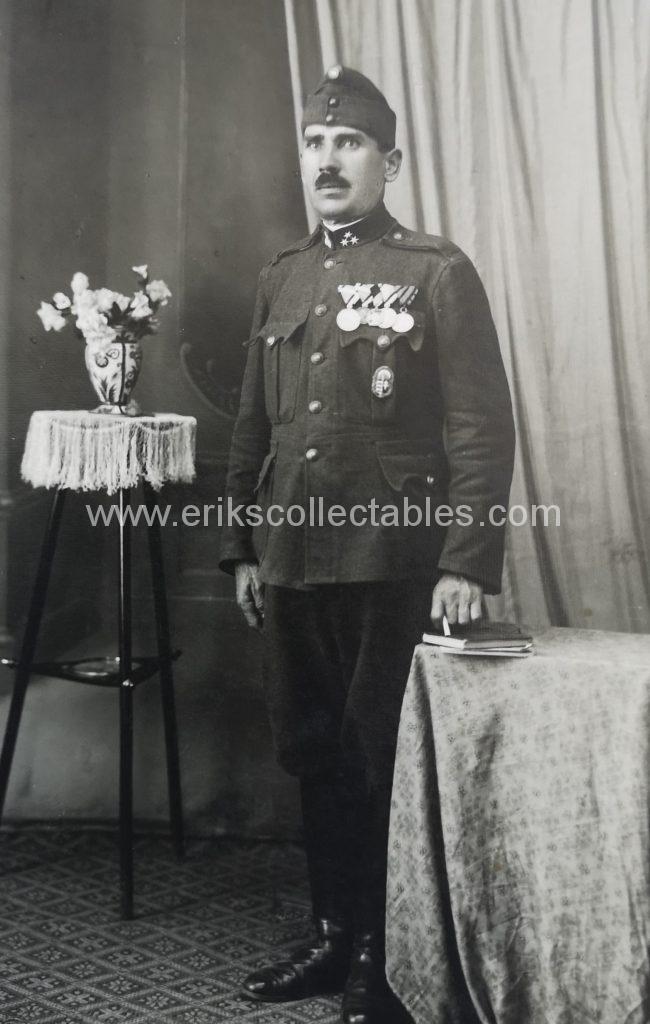
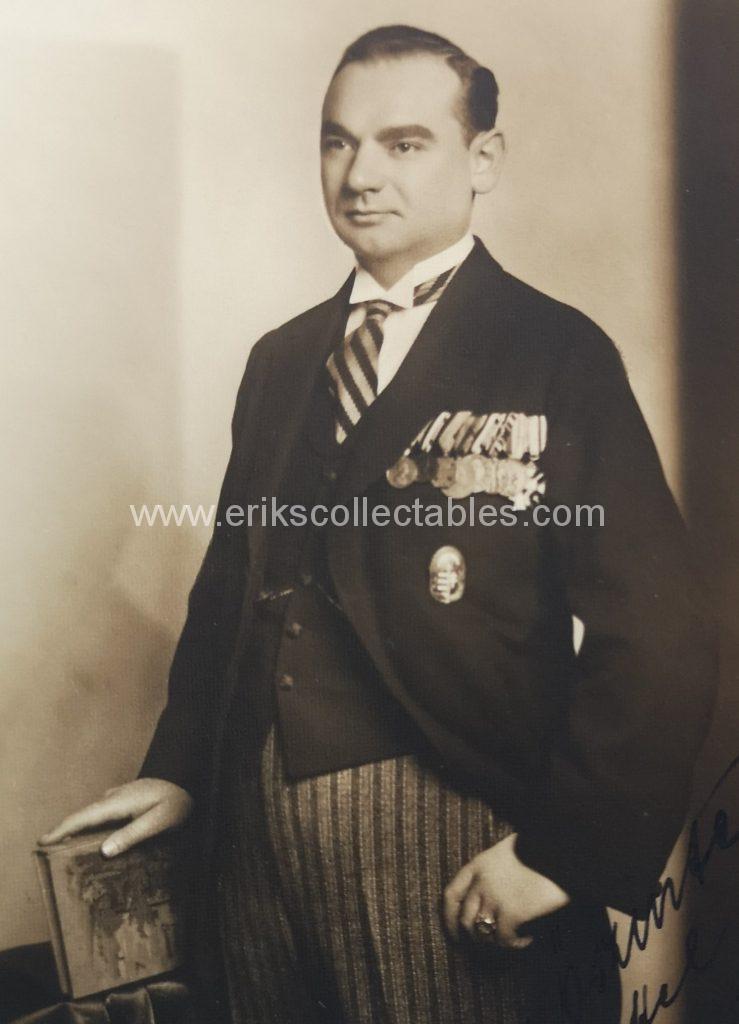
Some awardees, first one an nco in the interwar Hungarian uniform and the last in the veterans organization uniform (and based on the medals he became an officer during WW1).
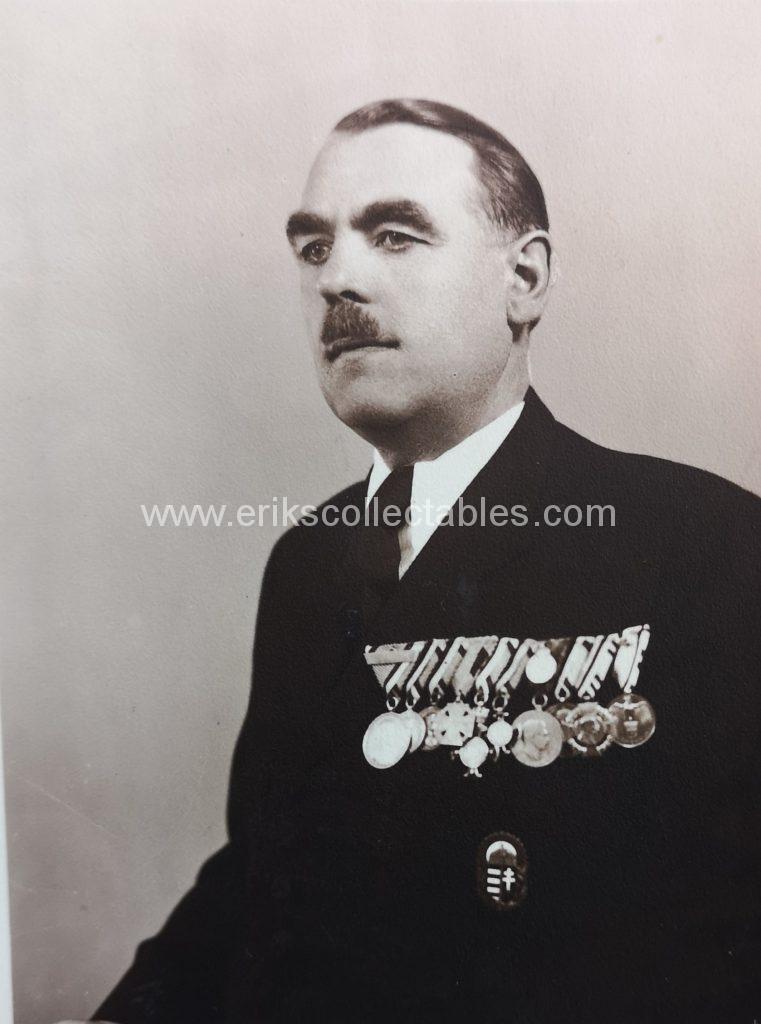
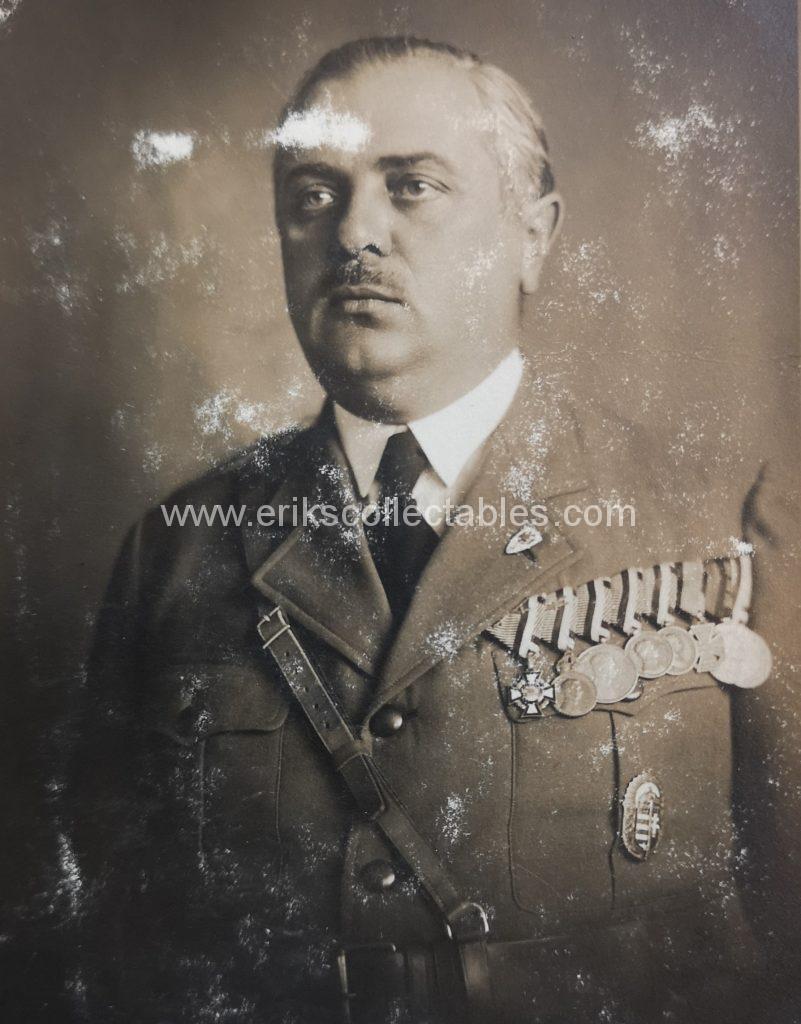
The order was established in 1920 (Prime Ministerial Edict Nr 6650/1920) by the Government under Prime Minister Count Teleki and Admiral Horthy, the Regent of Hungary from 1920 till 1945. The latter also became the Captain of the order from its institution untill its formal ending in 1945 (According to the rule 529/1945 but it was 1948 before it was practically disbanded).
One of the main differences with most other awards that it is based on the requirement of previous award. The awardees needed to have received a certain level of medal before they could apply. At the beginning this would be for WW1 but later in WW2 the same requirements would have to be fulfilled.
This way of working made if possible to acknowledge exceptional deeds of Bravery from a previous period as part of an empire that no longer existed. These deeds would otherwise have passed unknown and unrewarded in a country that fought on the losing side of the war. Now these same deeds could be used to establish a new “established warrior class” in the post WW1 Hungary.
The medal requirements were more or less the same for both world wars. The small silver medal for bravery (96.000 awarded in WW1 to Hungarians) in the case of enlisted men, and the large silver medal for bravery (26.000 awarded in WW1 to Hungarians) for the rank of NCO. The Merit Medal / Signum Laudis was the minimal requirement for the rank of Lieutenant and this goes up based on rank, for higher ranks higher grades of medals were expected. The small silver medal for bravery only very seldom led to actual awards of the vitéz order. It was too common to bestow the title on all owners of these. It was just that, a minimal requirement.
Below a WW2 period officer and a nco, both meeting the criteria based on their own medals so no way of telling if they were inherited vitéz awards or their own.

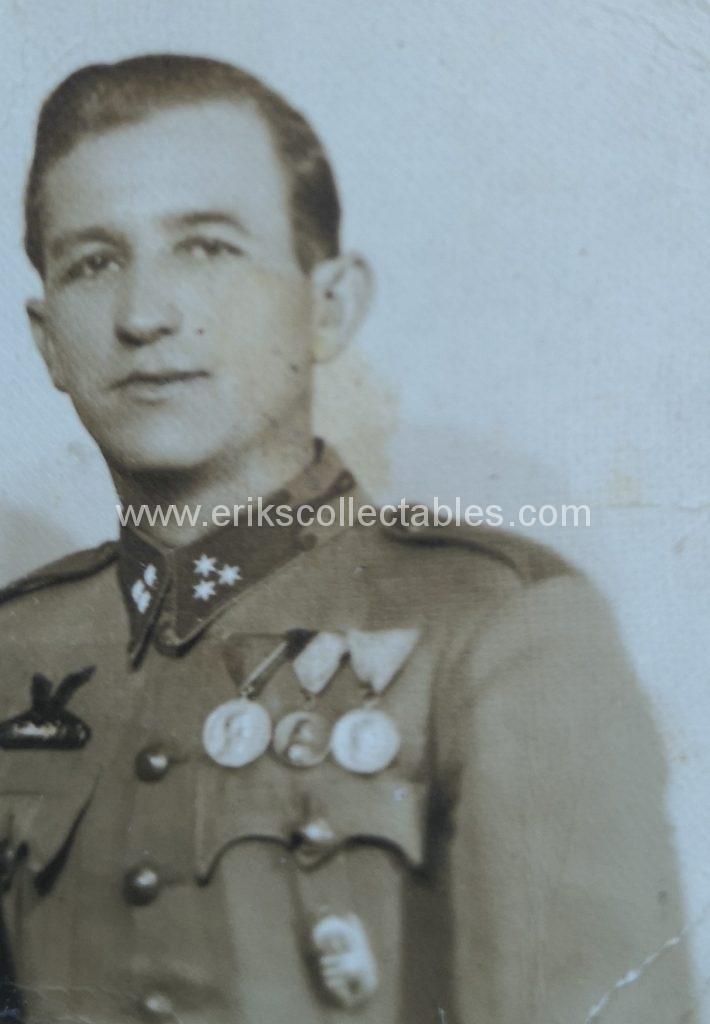
The men had to apply for the order through a quite extensive procedure at the end of which they would be granted the order when all requirements had been met. One of these requirements that is interesting is the use of Hungarian name. For those applicants having a German or Slavic name (both not uncommon) this would also mean they had to change their name. During research this can be troublesome if the original name is not known!
Part of the award of the order was the granting of the title of vitéz. This title was used as a prefix to the (family) name as can be seen in the namecards below.
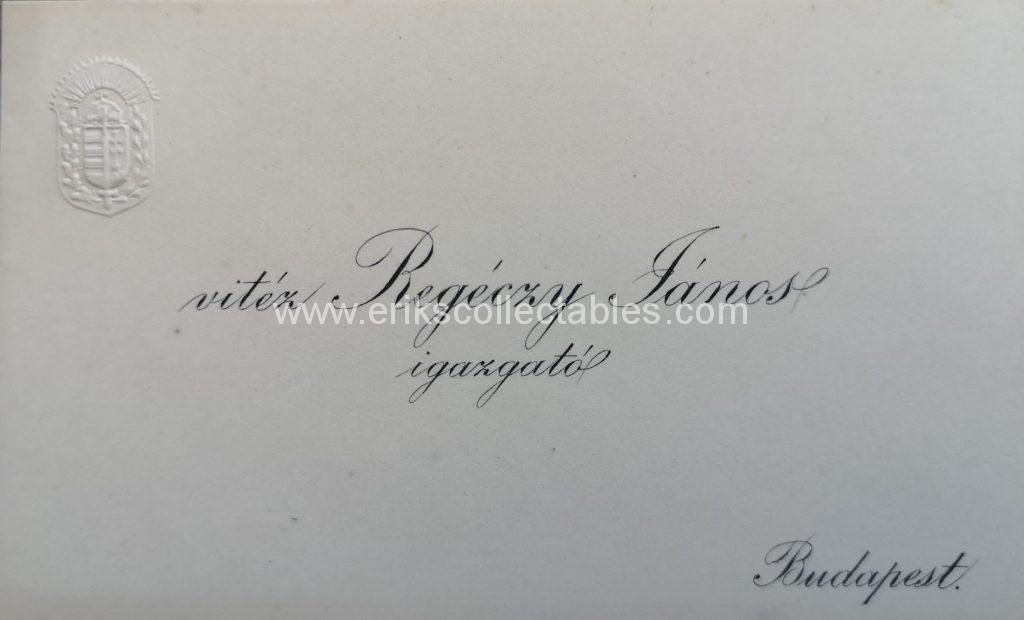
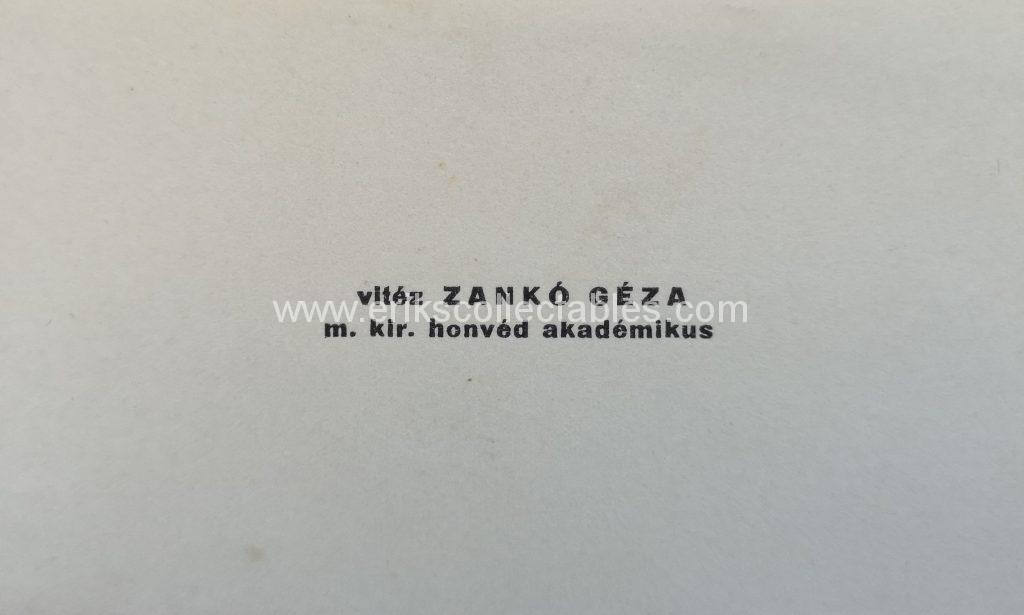
This title could only be inherited by the oldest son. If this oldest son was of sound physical and mental condition he would inherit the title at the age of 17. In this way the order can be compared to a nobility especially as the title was accompanied by a grant of land of approximately 10 hectares.

The awards were granted in a great yearly ceremony by the Regent, Admiral Horthy, himself. The ceremony originally took place in Budapest on the Margit Sziget, a small island in the Danube, located between Buda and Pest. Later this was changed to a more symbolic location. This was in Székesfehervar, a city renowned for the coronation of the early kings of Hungary and also as their burial location. The award ceremony was held at the exact same place, in the ruins of the original church of the coronations. The awardees were “knighted” with a large sword during this ceremony. The same sword that is depicted in the badge of the order. During the war the ceremonies were much smaller and held in different locations.
Below two invitations for award ceremonies in 1943. Left for the central one of february 1943 and right a local version held in Transylvania in october 1943. As you can see the war years 41/42/43 had only very small amounts of awards. For 1943 in total 300 awardees. Many of these were for people from the regained territories like Transylvania who could not have applied before 1941. This is the case in both invitations below. It also shows the awardee had to pay for the badge themselves!
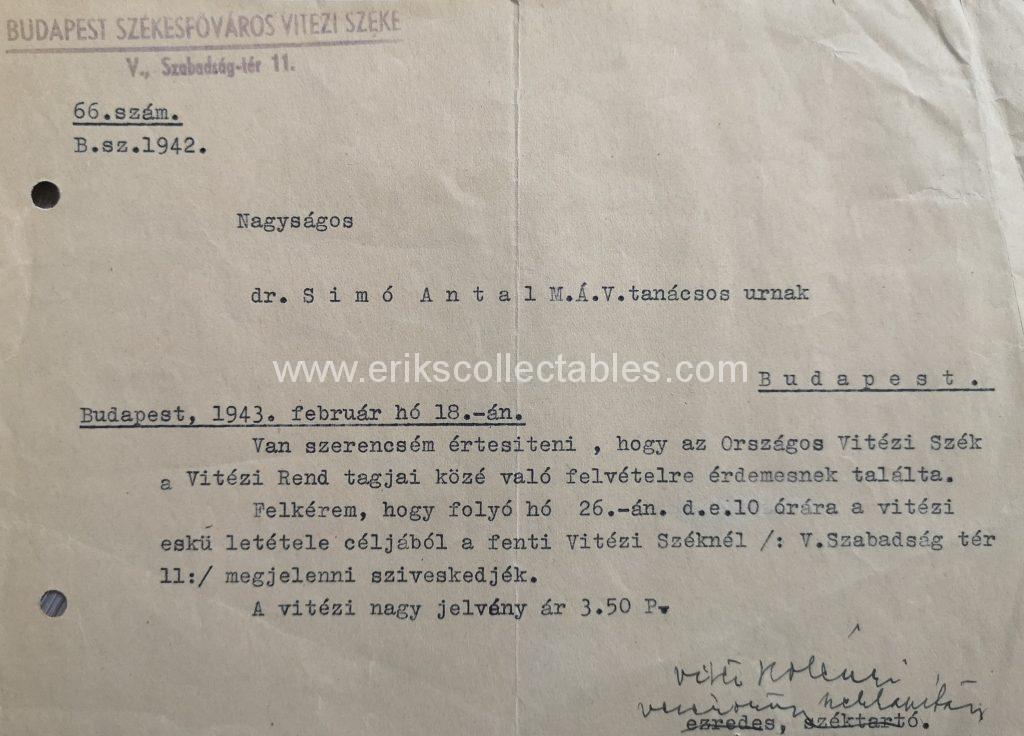
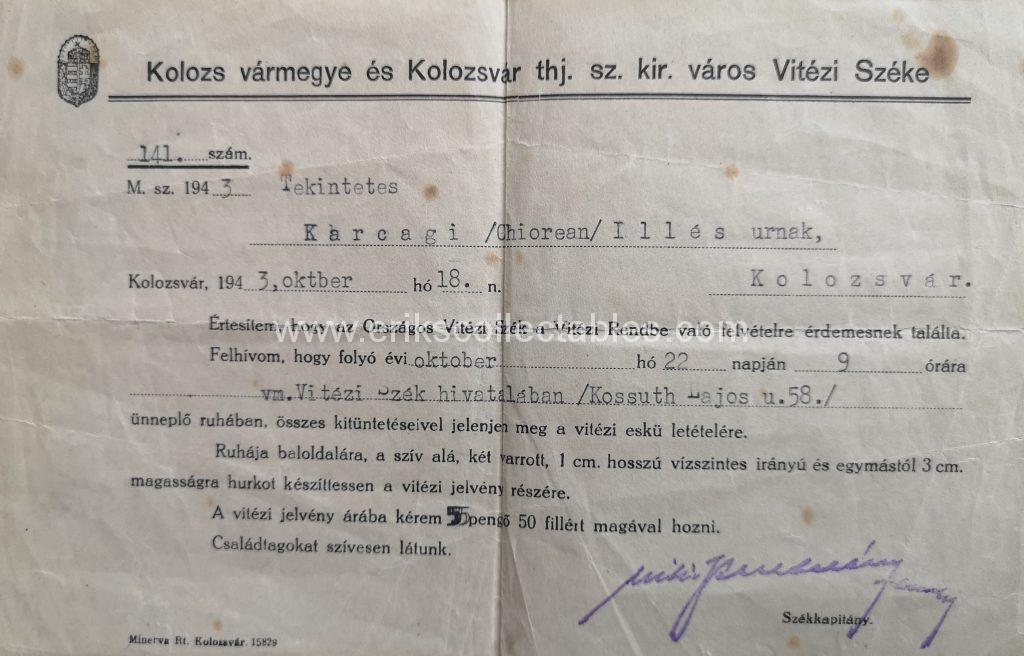
The granting of land to the vitéz members was part of a land reform executed by István Nagyatádi Szabó. In the early ’20s much land was still in the hands of a few and it was part of a modernization of land ownership that was badly needed to become a more balanced and modern nation. The actual grants were quite limited though, around 20% would actually get the grant of land (roughly 5500 grants of land of the almost 24.000 total awards). The land reform was more difficult and time consuming than was anticipated.
The vitézi rend had a very formalised structure with national and regional chairs, communities and much more, even their own order uniform as can be seen in the photo below.

Badges
There were 5 makers in total but the two most common variations by Boczán Gyula and Jerouschek are shown below. The other, rarer, makers are Gál, Walther and Boczán Károly. The swords of both Boczán makers are silver coloured. There are some other distinguishing factors also next to the actual markings of the maker. In the case of Jerouschek there are several variations of the markings due to the long period of production of more than 20 years.
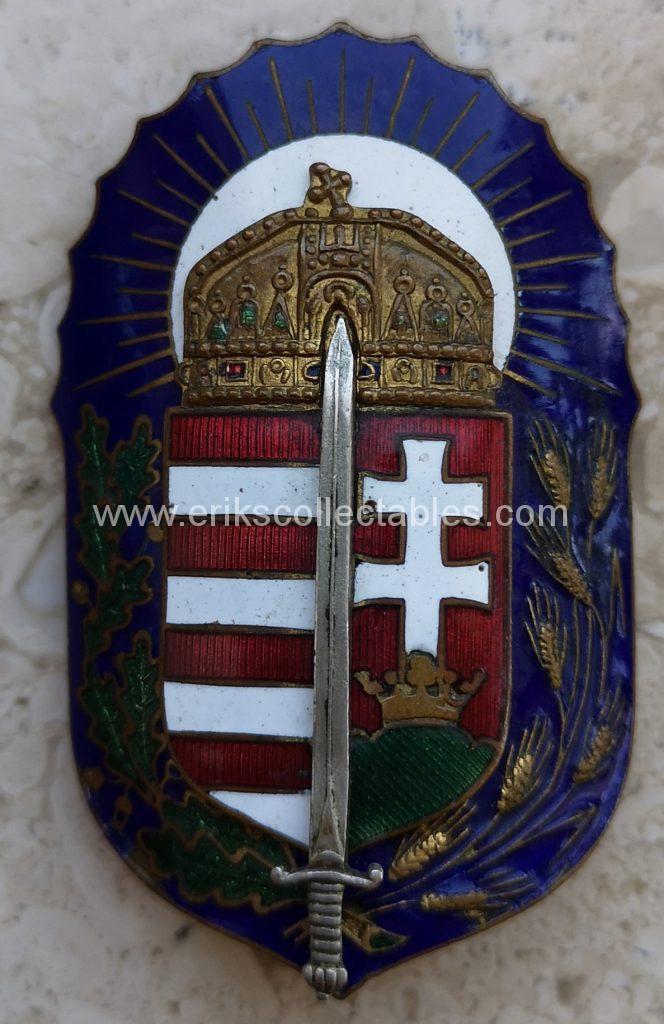
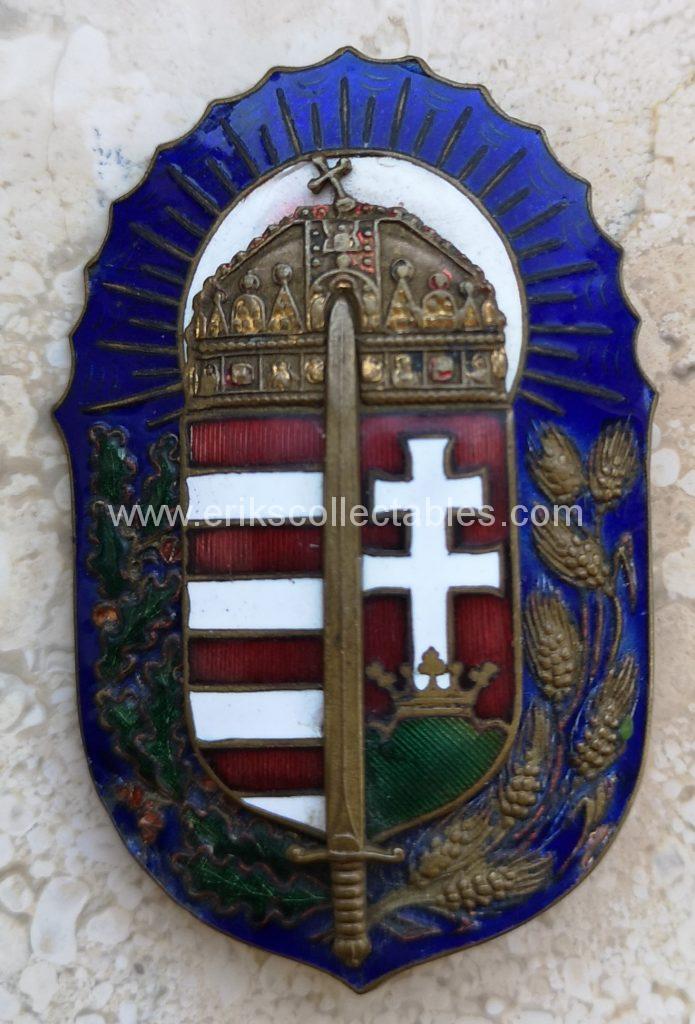
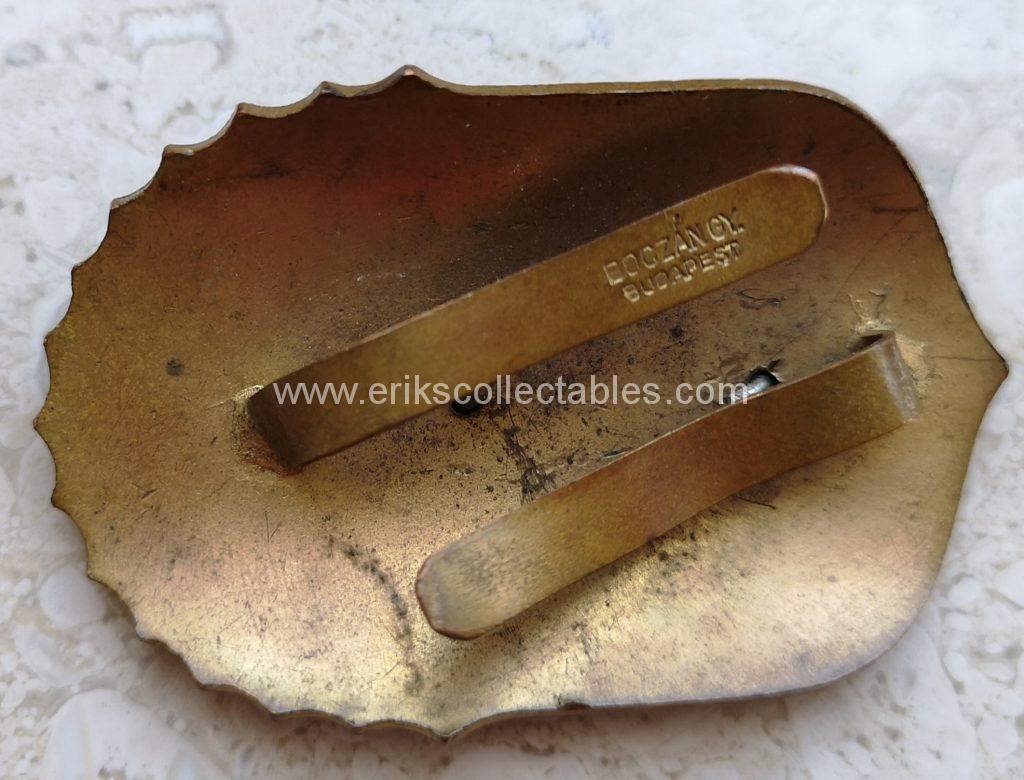
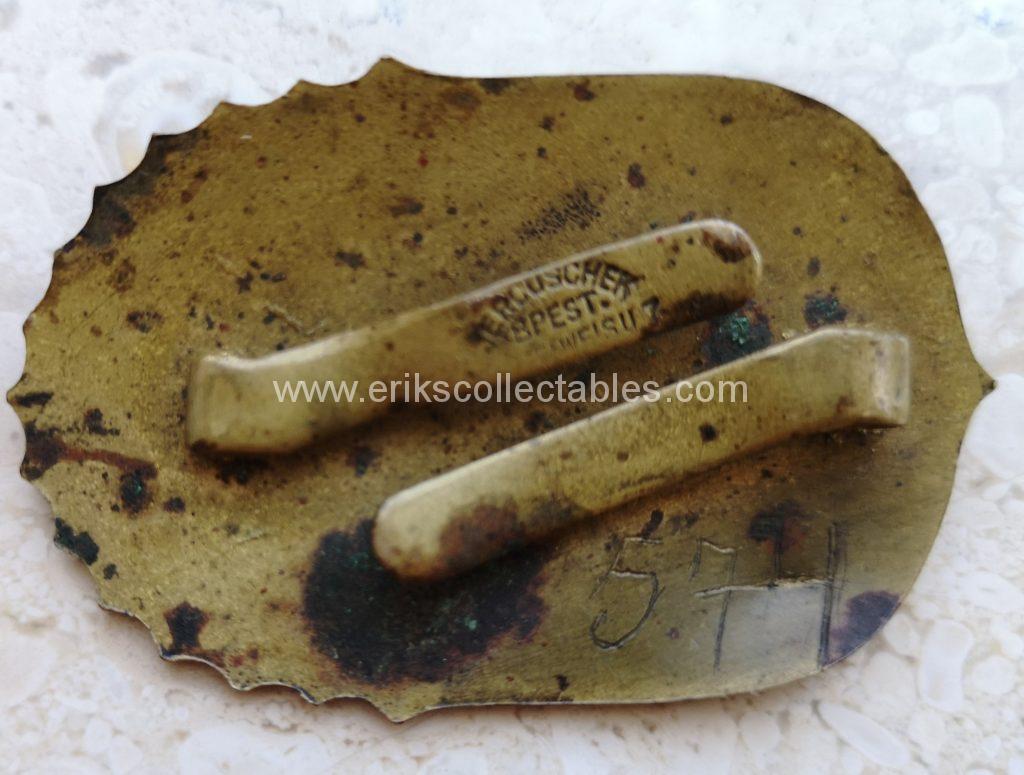
Two more Jerouschek variations of the award, first marked under the prongs and the second with a different naming than the version above on the prong.
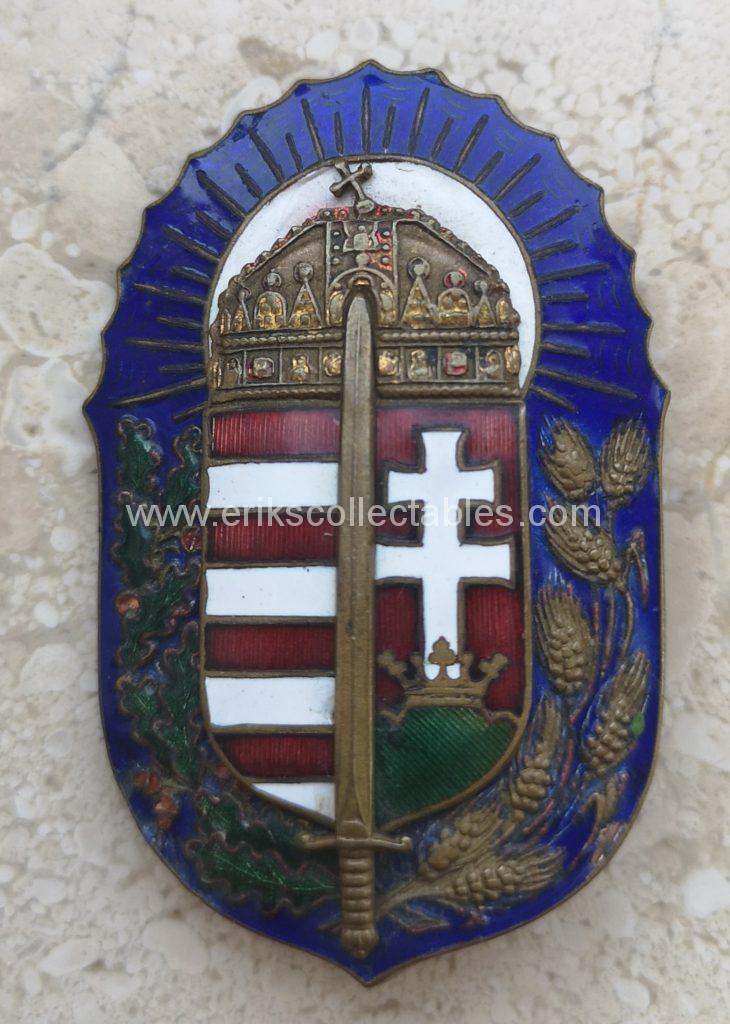
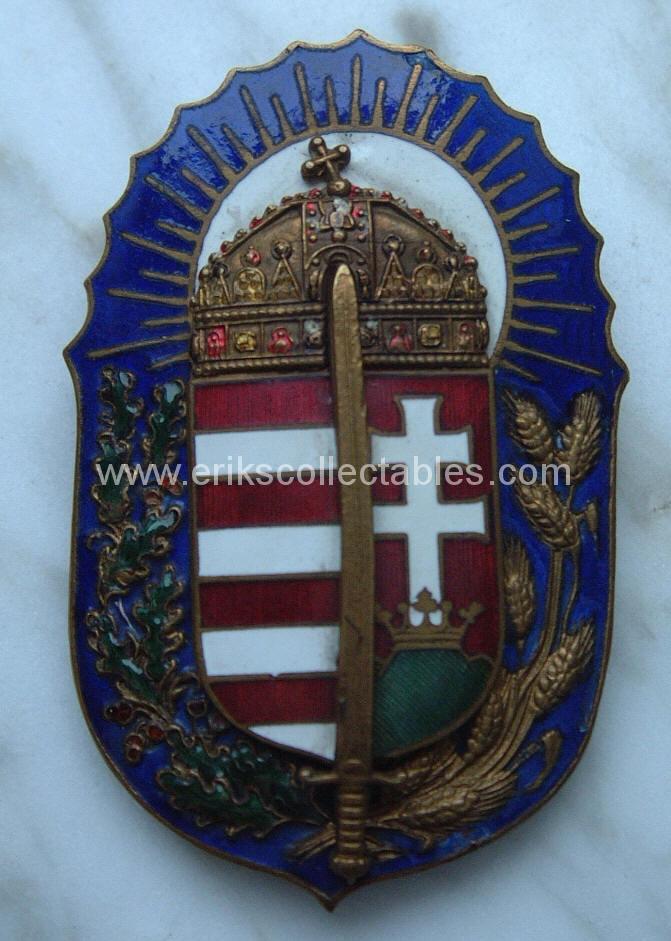
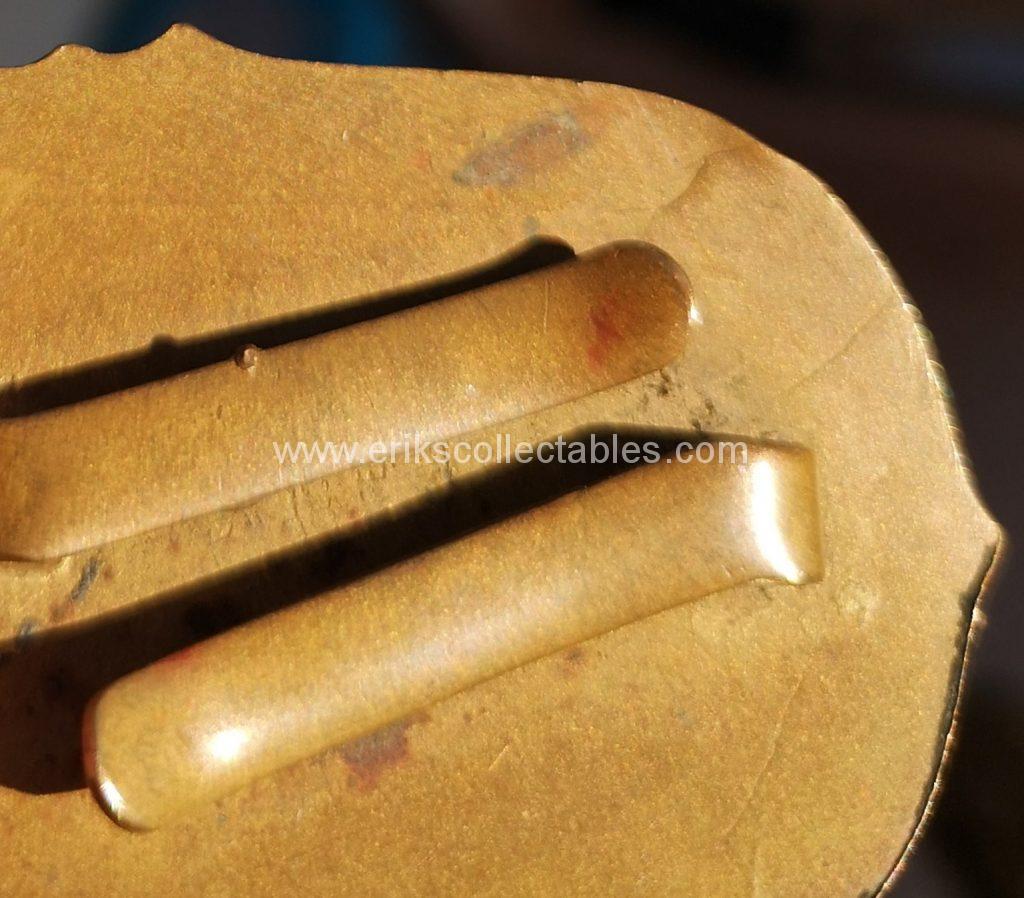
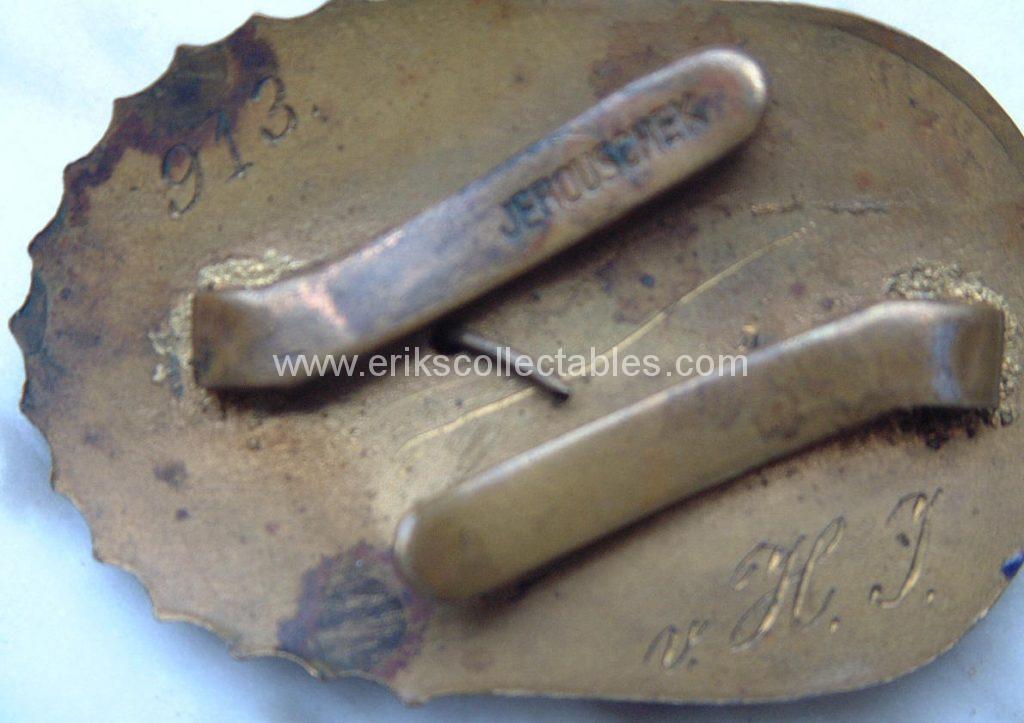
And two version that seem to be unmarked. The first one also has a different way of attachment of the prongs which identifies it as a version made by Boczán Károly despite the missing prong with the actual markings. The other is most probably made by Gál and marked under the prongs which is not visible. I do not have a Walther variation in my collection unfortunately.
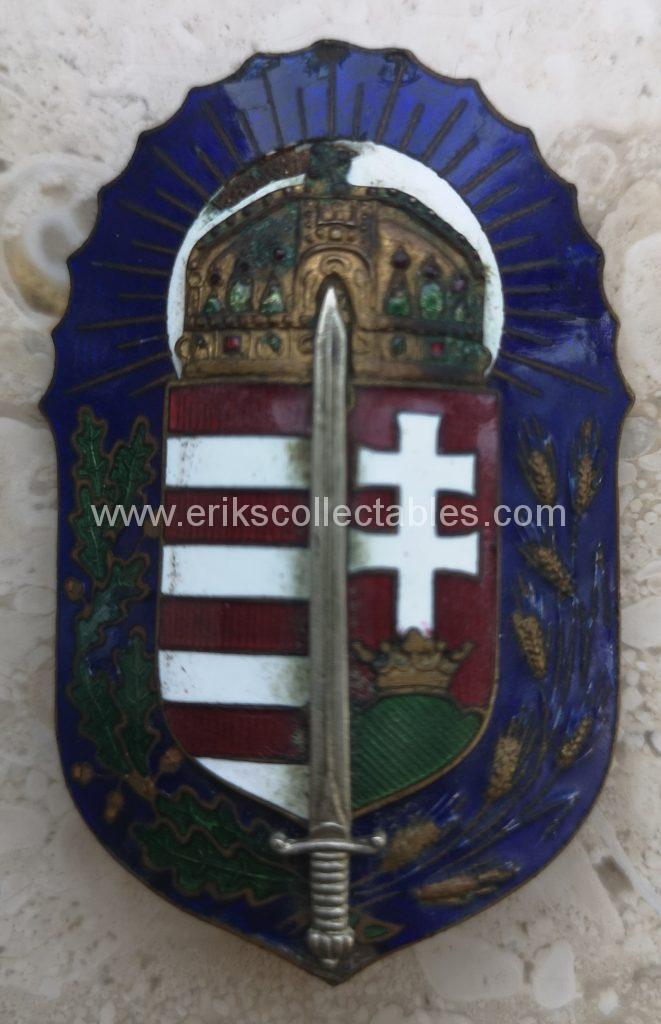
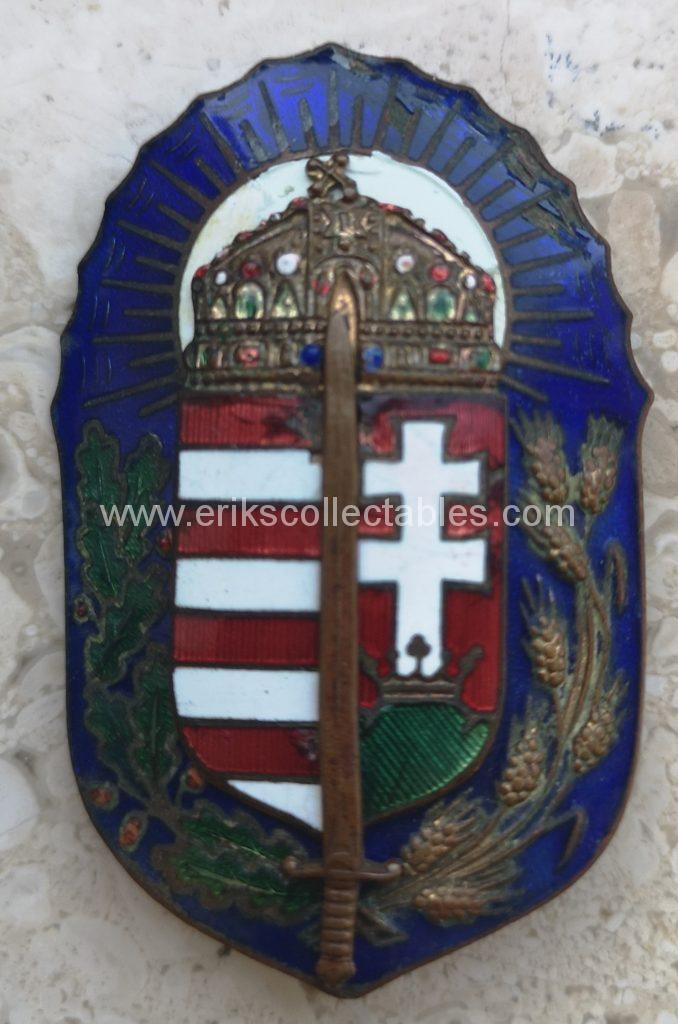
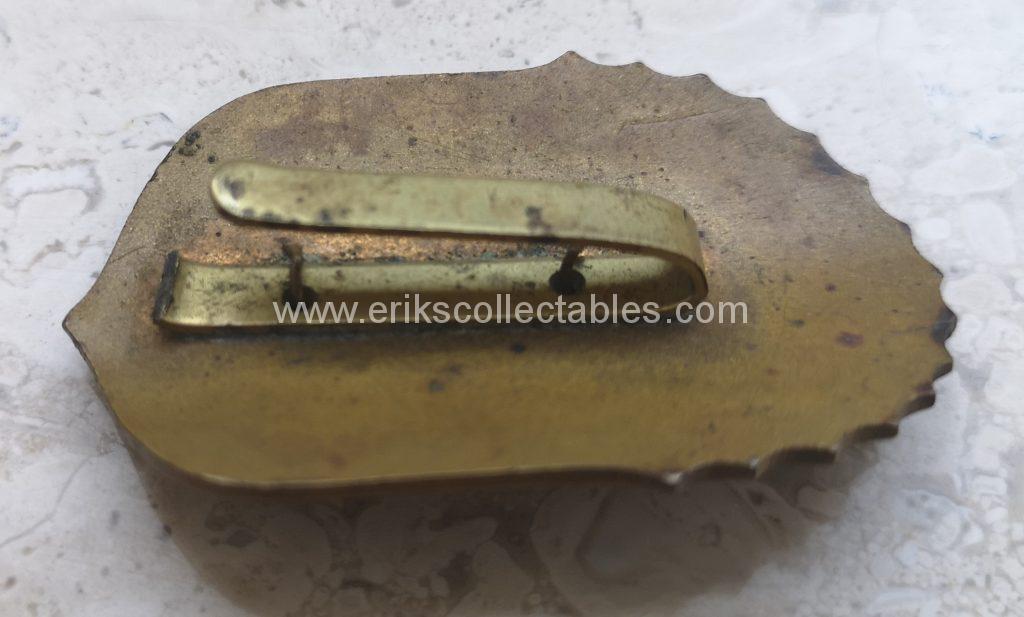
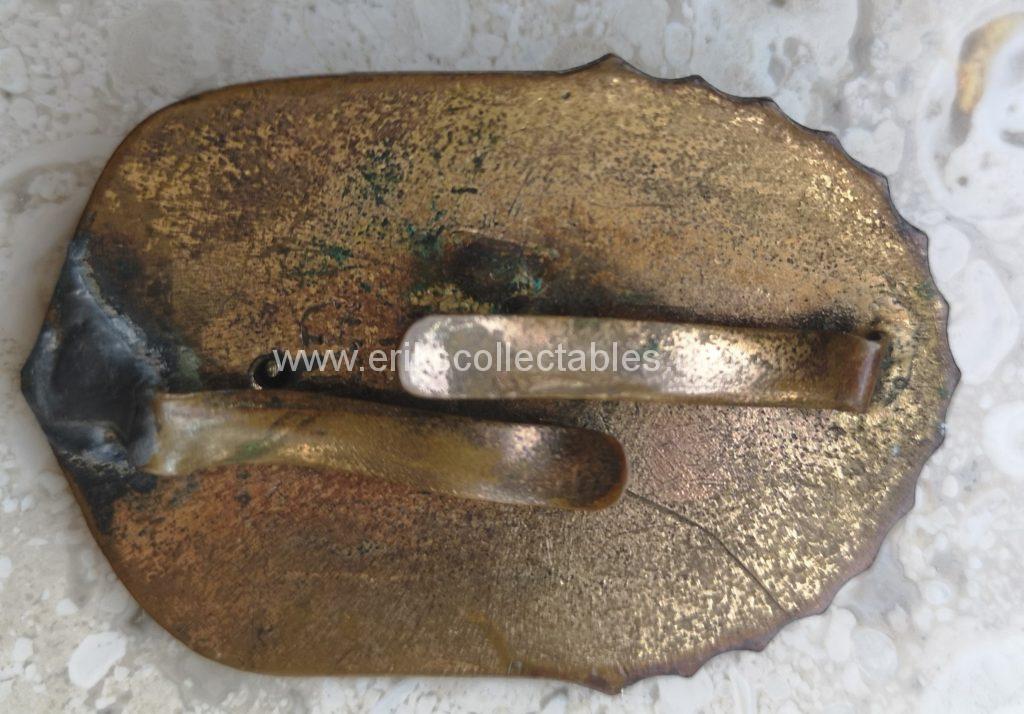
The badges were not numbered officially but many were privately named or numbered. The numbering of awards started with two sets of numbers, one for officers and one for other ranks. This numbering system changed in the 1930s when many awardees also would receive a new certificate with the new/different number. That way a badge with only a number often will leave several possibilities open. (officer/non officer/first group of numbers/second group of numbers). Only with the higher numbers it is clear it will be a rank below officer and the 2nd group of numbers!
Documents
Each award would exist out of the actual award (to be paid by the awardee) and a full size diploma shown below. There was no distinction between officers and lower ranks in this system, both in the award and the diploma.



Next to the diploma a smaller size certificate was used as proof of ownership of the award/title in daily use. Below 4 examples of the certificate or in Hungarian: igazolvány. The first one is to an officer.
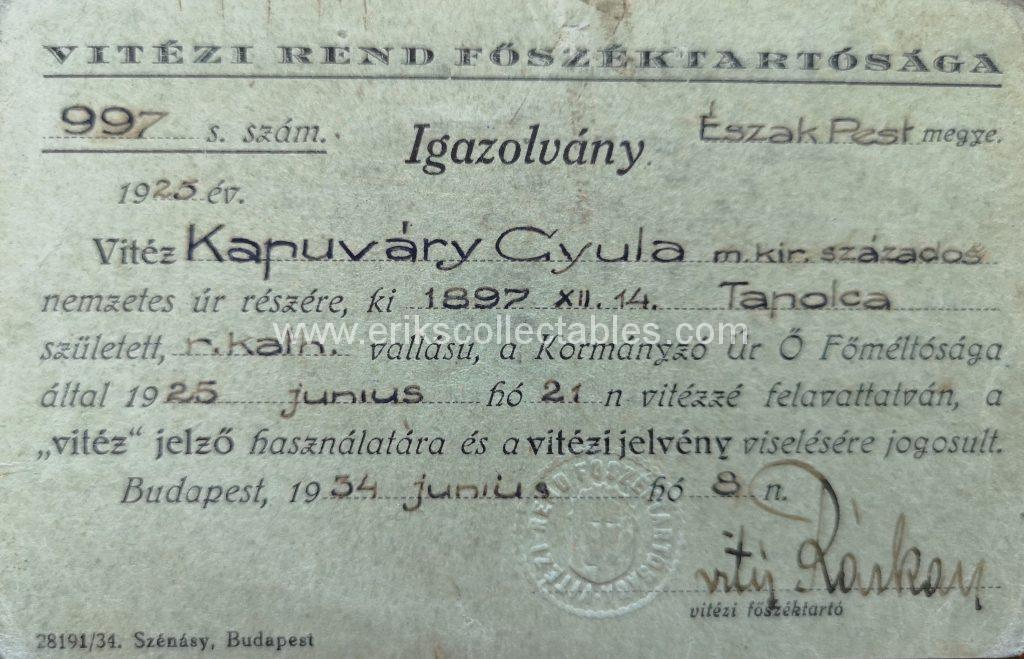
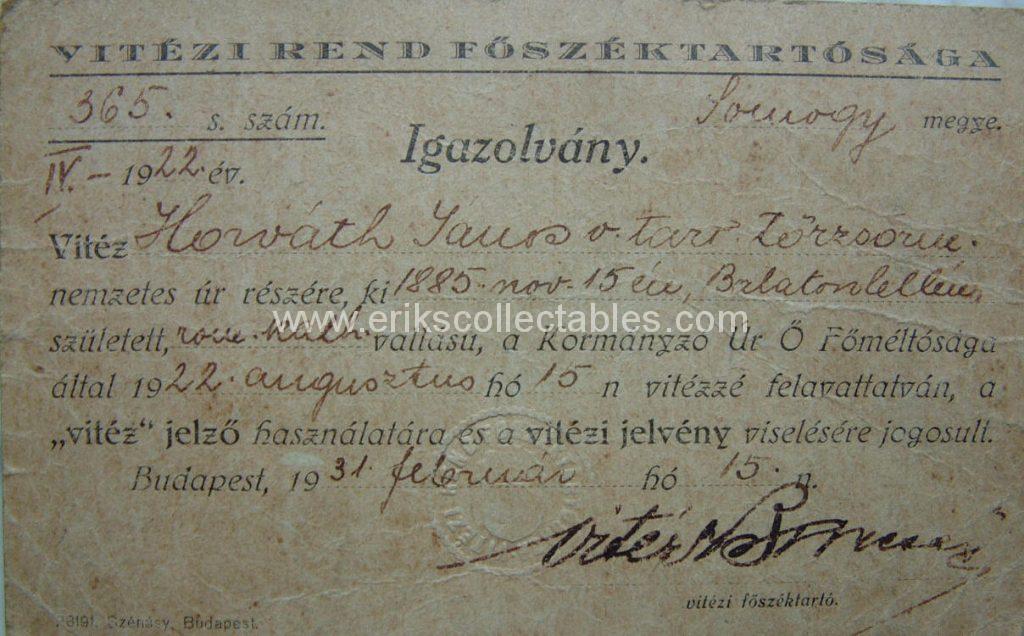

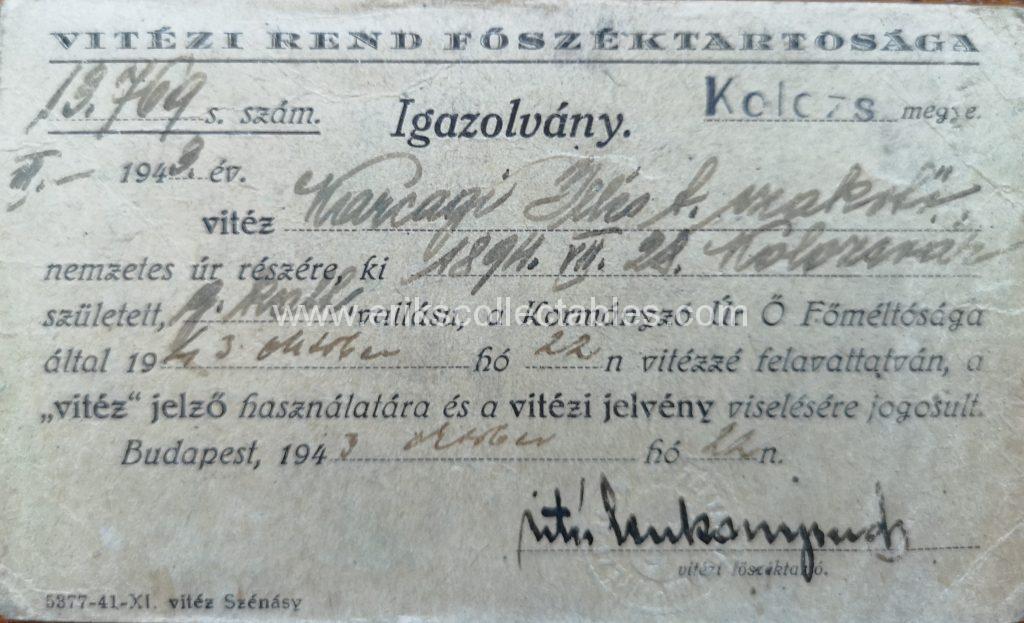
The grant of land received its own diploma as seen left. Next to it a replacement document for a lost original diploma.
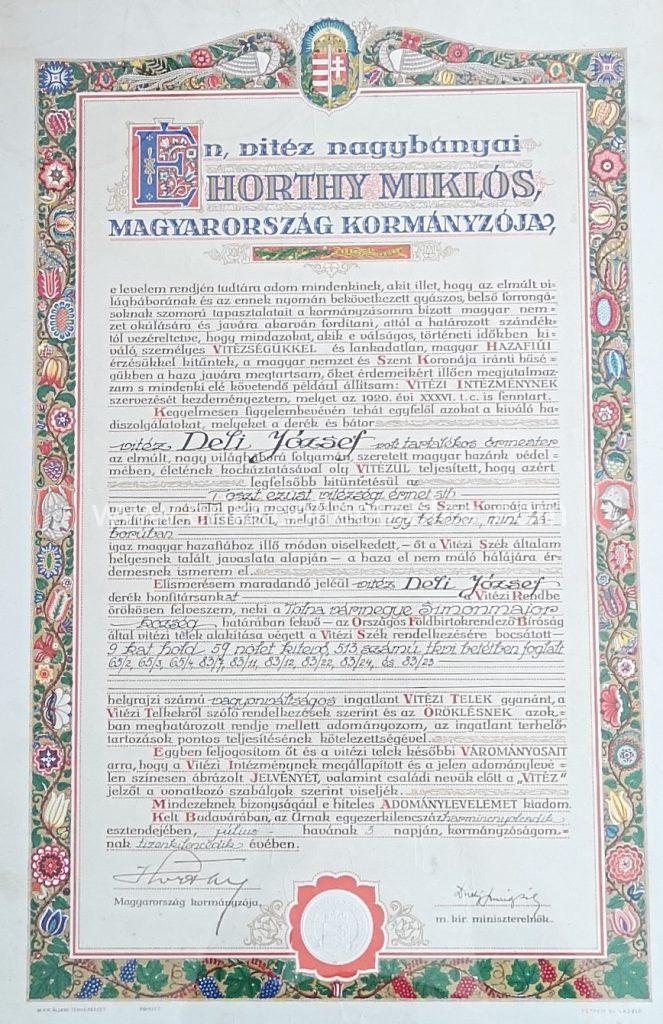
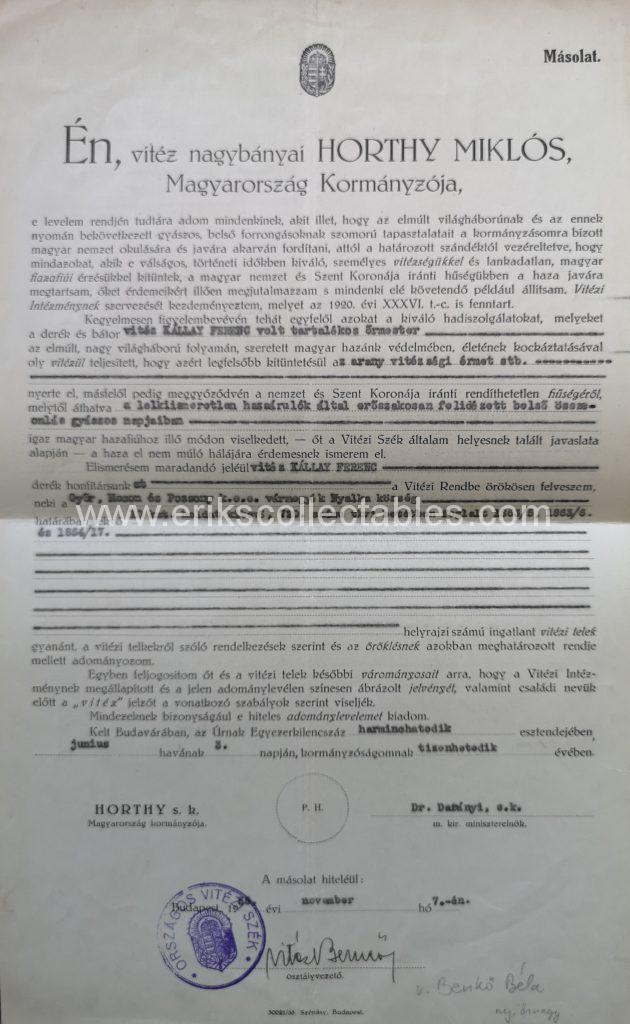
There were even courses for new land owners as shown by the document below. Designed by the same person as the diploma of the order.

Statistics
Some statistics about the number of orders, reproduced with kind permission of vitéz Dr. János Szentváry-Lukács.
Officers 4.358 awards, NCO’s 11.136 awards, Enlisted Men 7.326 awards.
The number of estates granted to award winners was only 5561 which amounted to a total of 88.000 hectares. This was mainly due to the low amount of land available for the new vitéz knights. Land was donated on a voluntary basis by landowners and local governments. Overview of the number of awards per year and the cumulative total per year.

Post 1945
After the Russians had “liberated” Hungary in 1945 the order no longer fitted the communist views and was disbanded. According to the rule 529/1945 but it was 1948 before it was practically and fully disbanded
A few examples that show the title did not immediately disappear after the war was over. The title is still used as a prefix on these communist party booklets….
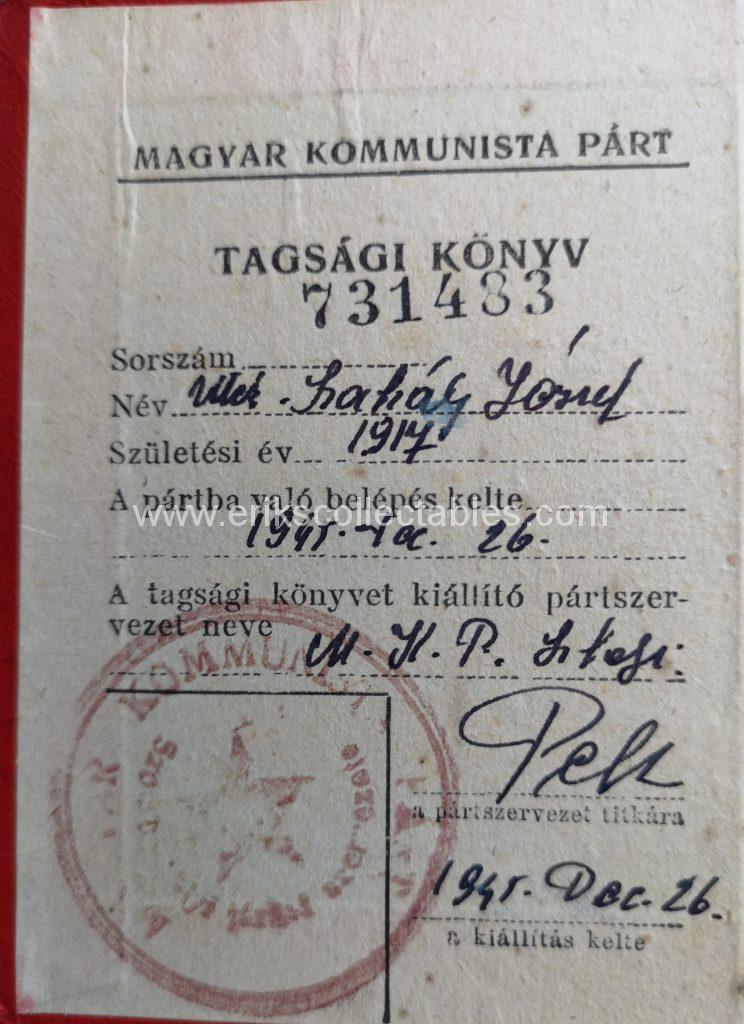
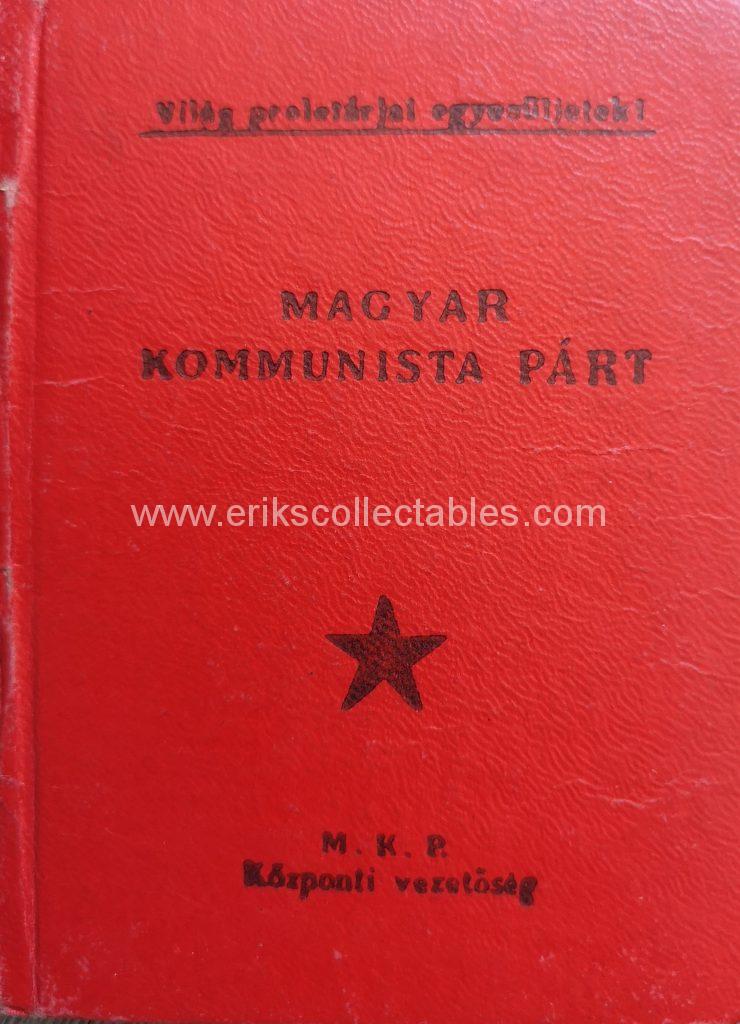
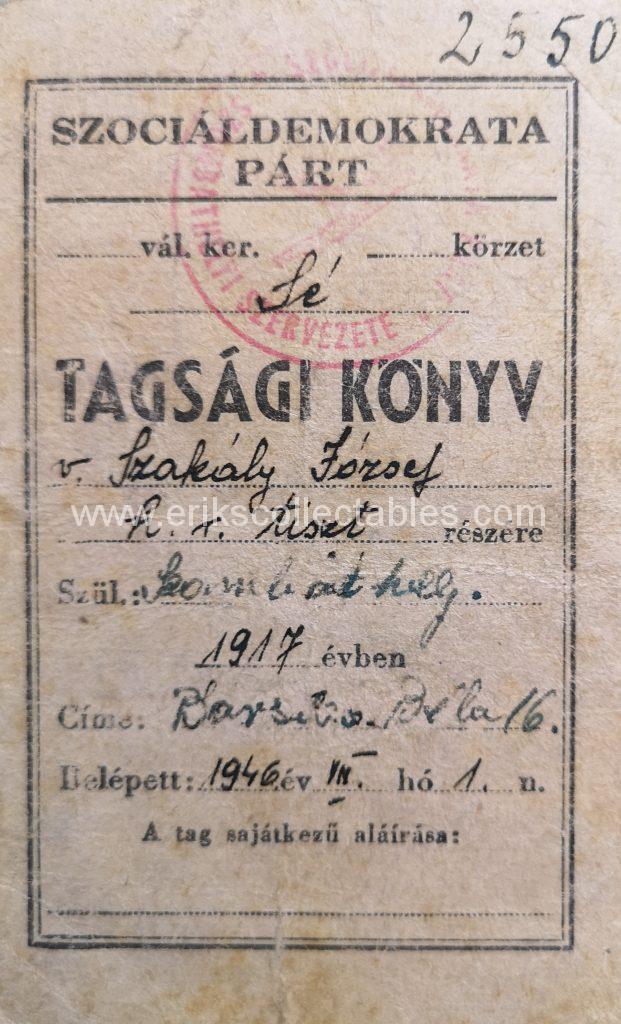
The order has been re-instituted after the war (first in exile and later also in Hungary) but this is blog is only about the historic order.
For more info read the Vitéz Stories blogs with some more info on specific members of the order.
Recently a very good and extensive book was published by Szabolcs Árkosi, A Vitézi Rend Nagy Albuma 1920 -1948. The book is in Hungarian but also has great photo content.
